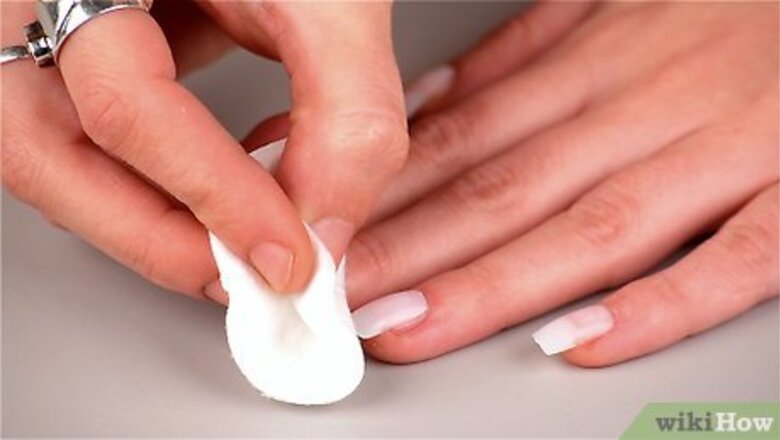
views
Easy Gradient with a Cotton Swab
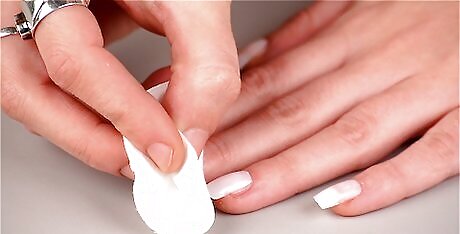
Swipe each fingernail with nail polish remover to remove dirt and oil. Soak a cotton ball in your favorite nail polish remover and quickly swipe the surface of each nail with the cotton ball. Nail polish remover gets rid of any oil or dirt on your nails so the polish sticks well and lasts longer. Acetone nail polish remover works best. If you prefer non-acetone remover, don’t worry! It will still get the job done. If you'd like, you can make cleanup easier by applying a latex skin protector around each nail.
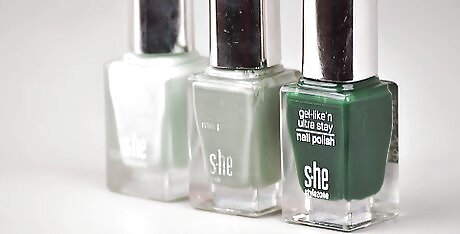
Grab 2-3 nail polish colors that look good together. You need a minimum of 2 colors to do a gradient. Monochrome gradients use different shades of the same color. Colors that are right next to each other on the color wheel also look great together. Create a simple monochrome gradient with baby blue, navy blue, and midnight blue polish. Green, blue, and purple work well since they're next to each other on the color wheel.
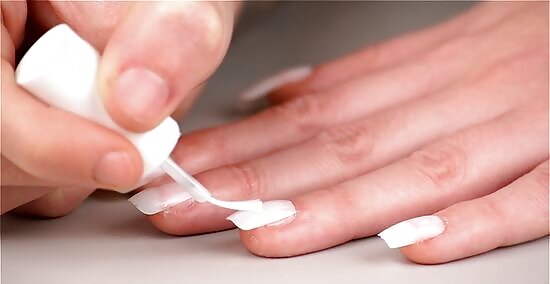
Apply a clear or white base coat and wait 2 minutes for it to dry. A base coat gives the colored polish something to stick to so your manicure lasts longer. Clear is traditional but a white base coat can make colors pop a bit more. Apply a single narrow stroke right down the center of your nail. Then, finish with 1 stroke on each side of the center stripe. This 3-stroke application technique is a tried-and-true way to apply nail polish with great results. Avoid putting down a thick layer of base coat. A thin coat is all you need!
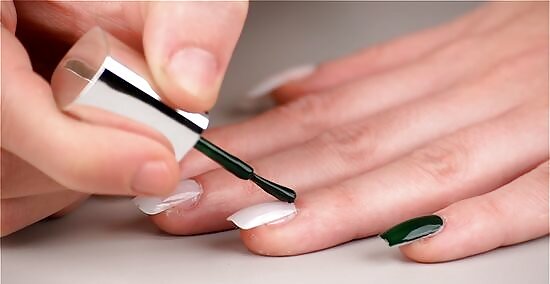
Apply 1 coat of the first color to each nail and let it dry for 2 minutes. You can start with any of your chosen colors, but most nail artists suggest beginning with the lightest color. Use the 3-stroke application technique to put down a thin coat of your first color. Paint the entire surface of every nail just like you would if you were doing a normal manicure. Most nail polishes take about 2 minutes to dry. It's easier to start with the lightest color and work a darker color into it. Things get a bit messier and it's harder to create a nice gradient if you start with a dark color and try to blend a lighter shade into it.
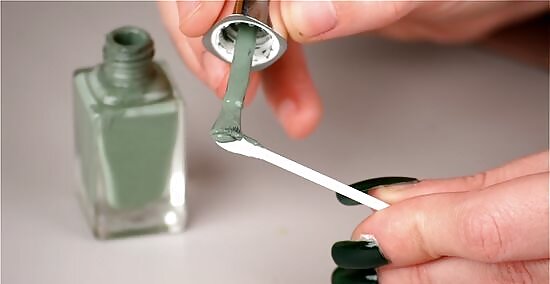
Paint the end of a cotton swab with a small amount of the second color. Use the polish brush to gently brush the second color right onto the cotton swab. Apply a small amount of polish—you can always add more polish as you go. Correcting a thick, goopy layer of polish on your nails is much harder! If you don't have cotton swabs, cotton balls also work. You'll need to work a little harder at keeping your hand steady, though! It's easier to mess up because the surface of a cotton ball is a lot wider than a cotton swab. Be sure to apply the polish to the cotton ball in the shape of your nail. If you have a clean eyeshadow applicator, you can use the same technique to create this look.
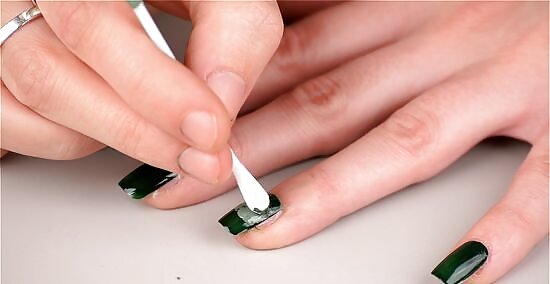
Use light pressure to apply the second color starting at the center. If you want the gradient to move from cuticle to tip, start at the center of your nail and work toward the end of each nail. Use gentle pressure to dab and blend the color lightly at the center. Keep the color soft and don't create any hard lines. Continue adding polish as you work your way to the tip, gradually making the color darker and more saturated as you go. For a horizontal gradient, start in the center and move to the left or right of the center. Everything else is the same. If you’re doing 3 colors, stop halfway to the edge of your nail to leave room for the last color. The rest of the instructions are the same.
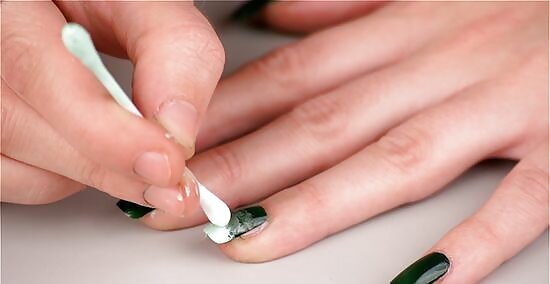
Wait 2 minutes before dabbing on a third color, if needed. If you're doing a 3-color gradient, gently stipple and dab the third color right where the second color left off to cover up the hard line. Keep dabbing and blending as you work your way to the tip, gradually making the color darker and more saturated. Let the third color dry for about 2 minutes before adding the topcoat.

Apply a quick-drying clear topcoat to each nail to complete your look. A clear topcoat locks in your color and creates a gorgeous, shiny finish. It can also blur the color transitions just a little more. Once the topcoat dries, soak the tip of a cotton swab in nail polish remover and clean up the edges around your nails.
Ombre French Manicure with a Brush
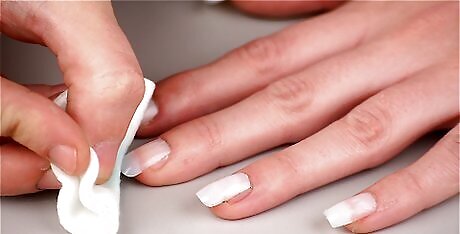
Clean each fingernail with nail polish remover and a cotton ball. Wet a cotton ball with nail polish remover and wipe the surface of each fingernail to get rid of any oil or residue. That way, the polish goes on better and lasts longer. Regular acetone remover works best, but acetone-free remover is fine, too.
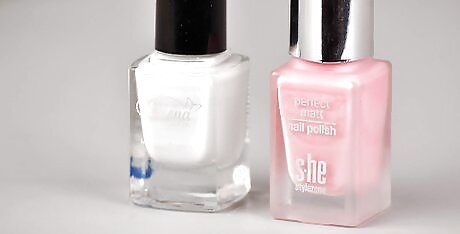
Grab a peachy pink polish and a plain white polish. To do an ombre French manicure, you need a peach or baby pink color for the bottom part of your nail. For the upper portion, a plain white polish will do the trick. The peach/pink mimics the flesh-toned color of your nail beds. The white mimics the white tips of natural fingernails. This technique is ideal for precision-blending an ombre French manicure, but you can use it for regular gradients, as well.

Apply a clear base coat from cuticle to tip and let it dry for 2 minutes. A base coat helps the color polishes adhere better to your nails. Apply a single narrow stroke of the clear coat right down the center of your nail. Then, brush 1 stroke on each side of the center stripe to finish the nail.
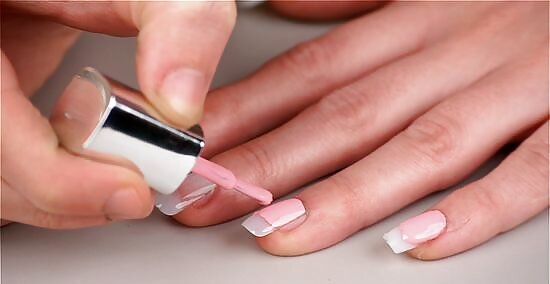
Apply 1 coat of peach color to the bottom portion of each nail. Start at your cuticle and cover the bottom part of each nail with the peach or pink color. Stop where your nail bed ends so the French manicure looks realistic. Move on to the next color immediately. Don't wait for the peachy pink color to dry.
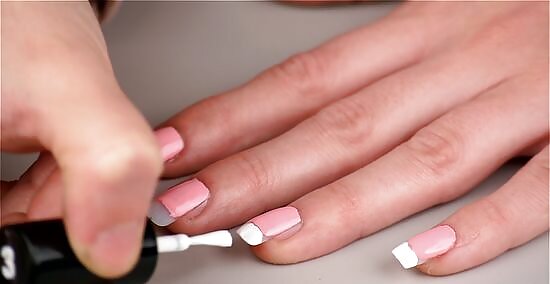
Add white to the top portion of each nail, leaving a tiny gap between colors. Dab on the white polish on the top part each fingernail, where your nail bed ends, but don’t let the 2 colors touch! Leave a tiny space between them about the same thickness as a pen stroke.
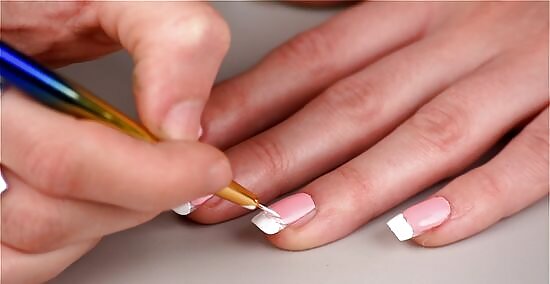
Use a small makeup brush to blend the colors across the line. Grab a tiny makeup brush or paintbrush and brush back and forth over the gap to mix the 2 colors together. Use tiny strokes and stick close to the line as you blend. If the colors aren't blending as seamlessly as you'd like, dip the brush into a small amount of white polish. Brush it along the tiny gap and continue blending. Let the nail polish dry for 2 minutes before moving on.
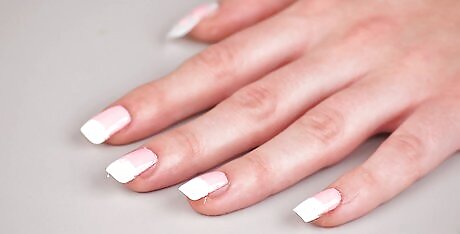
Swipe on a quick-drying clear topcoat to seal your manicure. A topcoat creates a glossy finish and helps your manicure last longer. It can also add a slight blurring effect so that your gradient looks seamless. Soak a cotton swab in nail polish remover and clean up your nail edges once the topcoat dries.


















Comments
0 comment